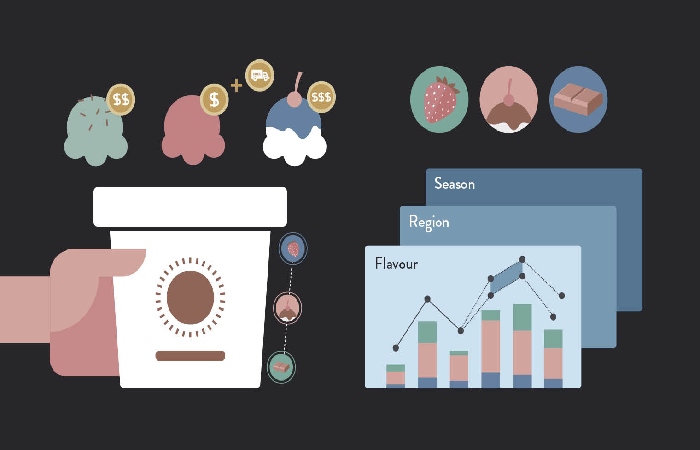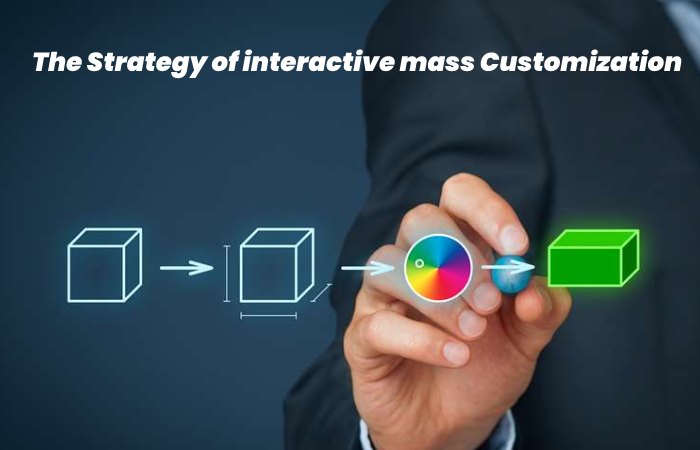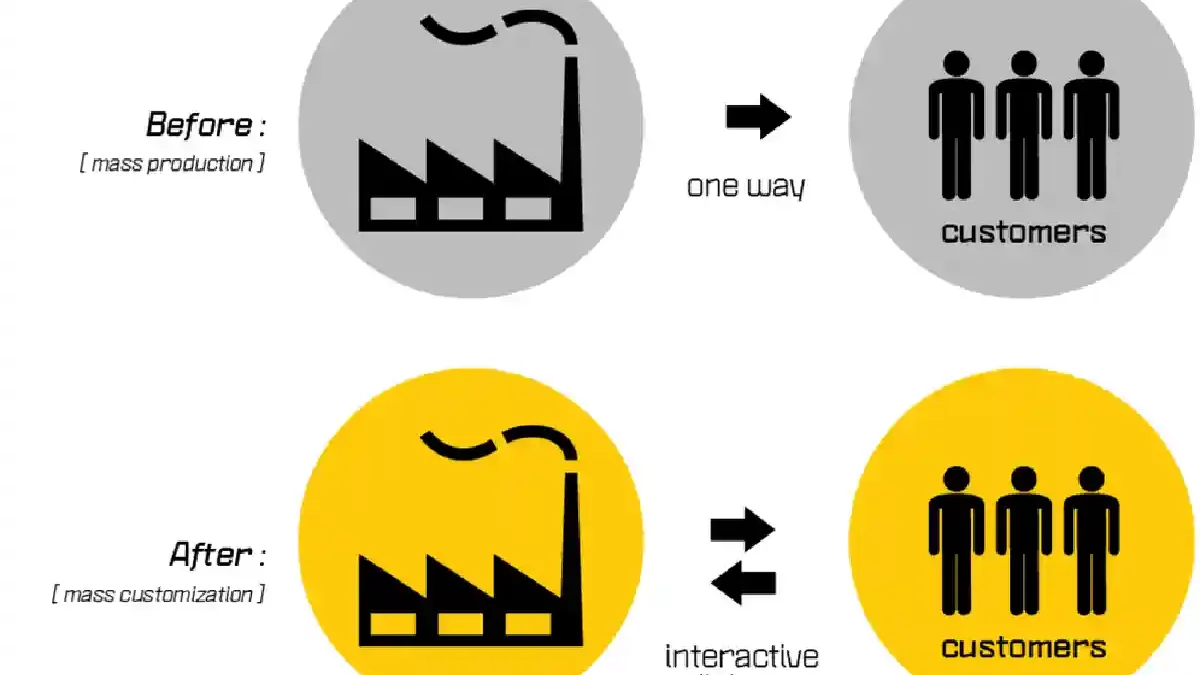Table of Contents
Interactive Mass Customization
The concept of interactive mass customization is to offer each customer a unique and exclusive product. Thanks to the growth in supply, customer demand is no longer satisfied with the basics. Now they look for ways in which brands meet or exceed their expectations. One of the ways to solve these demands is through mass customization.
This tactic combines the advantages of customization with the low costs of mass production. In other words, the business that offers the product or service has innovative techniques that allow it to create interchangeable parts, keeping production costs low and providing the opportunity to customize the final product in detail for consumers. In this scheme, in a certain way, the people who buy are no longer found until the end of the production line but have a privileged place almost at the beginning.
What is Interactive Mass Customisation for?

Thanks to this sales format, companies and businesses can see first-hand what their customers are looking for in the products and services: sizes, colors, materials, functions and other aspects.
It allows a clear differentiation of the value offered from the competition without increasing production costs since the processes continue to be mass, but with customization flexibility.
With mass customization, people feel more satisfied with their purchases because they choose exactly what suits their needs. Furthermore, when customers have decision-making power over the final product or service, it gives them confidence that they have chosen the right supplier.
Consequently, customer loyalty increases thanks to the ease with which a product or service can convert into a customized solution.
Differences between Mass Customizations and Mass Production

Mass production is about large numbers of rapidly standardized products because you don’t need to create different versions: the same product or service meets all your customers’ needs. For example, a clothing zipper brand doesn’t need mass customization with its customers because it is one version that is ideal for all the clothing factories it serves.
Mass customization is how to produce custom items and services at a low cost. This is used when the company realizes that it has a large consumer base with diverse needs and tastes and can take advantage of production methods to obtain parts (or features) that customers can modify on a whim without drastically changing the final price. This can does by a computer manufacturer that allows each person to choose from the color of the device, the RAM, and peripherals such as the mouse, keyboard, microphone or operating system in its online store.
4 Strategies for Interactive Mass Customization
If you want to implement this strategy but don’t know how to read on, we will present you with several alternatives to put mass customization into practice.
1. Collaborative Personalization
The company works directly with its customers to achieve successful customization. This strategy is chosen because the product or service offers many variants, but it can select only at the start of production. Consumers become more involved in the design stages and play with the possibilities at their disposal.
On many occasions, it will be essential for the company to have direct communication with its customers (as in the shoe or eyeglass business) to answer any questions and explain everything it can offer; this communication process would not have to repeat in each interaction since the design selected by the customer can use in future purchases.
2. Flexible Customization
This strategy works when the product or service starts with a standardized model that can adapt to customers’ needs without the company having to direct it at every step. For example, what can do with the technology of LED spotlights that control utilizing an application: depending on the visual sensitivity and preferences of the person, the light is changed to warmer or colder, more intense or dimmer spectrums, even they change colour if the model allows it.
But it can also do before purchase, as flexible personalization transfers the power to design, produce and decide the delivery of the final product or service to consumers. It is necessary to have a platform that allows it (such as certain online stores that give options to “build” an article based on the customer’s needs).
3. Cosmetic Customization
Suppose a company’s product manages to satisfy almost all of its consumers. In that case, the cosmetic customization strategy is what it needs since it only deals with modifying aspects of the shape or appearance.
The process for this mass customization is much simpler because there is no need to make expensive element modifications. This is what airlines do. For example, they do not give each traveller who chooses a premium service a different plane. Still, they offer benefits that the company already identifies thanks to studying its customers’ behavior. Preferential entry, an extra menu during the flight, the option of seeing a different movie than your row mate, and greater baggage check-in capacity do not imply building a new aircraft from scratch. Still, it does translate into substantial differences for passengers.
4. Transparent Customization
This strategy is one of the most complete, but it also has a higher level of complexity. The exciting thing about transparent personalization is that customers don’t notice it right away. The company doesn’t ask people to indicate their preferences but instead adapts to their decisions every time they interact.
This Harvard Business Review article mentions an example of this strategy: Ritz-Carlton hotels do not ask their guests to answer surveys but rather record the services. They contracted for each interactive mass customization stay, from the selection of pillows to the number of pads. Of towels they needed. Thus, the next time they stay at another of the hotels, they will be served with those preferences beforehand.
Examples of Companies using Interactive Mass Customization
The computer manufacturing company has options for different needs or pockets. Best of all, it allows people to configure their laptop with color’s. Other internal components such as the processor or the operating system and even accessories or specialized support interactive mass customization and maintenance services.
The Strategy of interactive mass Customization

Technological advances and mainly the variation of desire motivate consumers to more individualistic and demanding every day. Which makes them more exclusive people in their requirements and forces companies to adapt to their needs.
“By massifying what consider identical (as occurs with products). If society only reproduces an average of our capacities with the trends indicated by the norm. Western culture exacerbate many of the norms of exclusion and pathology of the communities. That he conquered with his thought; he also rewarded the object with a leading role, punishing the subject with the supporting role” – Martín Juez, 2008:72
Sacrifice Individuality for a Lower Price
If we talk about mass production, we understand it as a philosophy. Where consumers interest in acquiring accessible, low-cost products that are always available. They store in interactive mass customisation inventories and meet future demand.
This production system works as long as consumers interest in acquiring the product before considering its specific characteristics.
In terms of infrastructure, the facilities for producing these goods are expensive and do not suffer from variations; however, the production costs are low. Its great virtue is to achieve economies of scale.
Mass production targets the most significant potential market. However, it compromises by increasing market fragmentation, making mass marketing extremely difficult.
The growing fragmentation has caused companies to segment their markets. It produces and markets. Its products are at the level of segments, niches, and unique individuals.
Conclusion
In the fall of 1994, Levi Strauss & Co. launched a new product in 50 of its stores in the United States: “personalized” jeans (Personal Jeans). The jeans are individually interactive mass customisation manufactured for customers using technology development by Custom Clothing Technology Corp. (CCTC).
An in-store clerk takes the customer’s measurements, including the type of fit, colour, and style the customer prefers. The computer transmits this information to Levi’s factory in Tennessee to begin manufacturing; in less than two weeks, the customer. If can pick it up at the store or receive a pair of jeans tailored to his needs at home.
Also Read:


